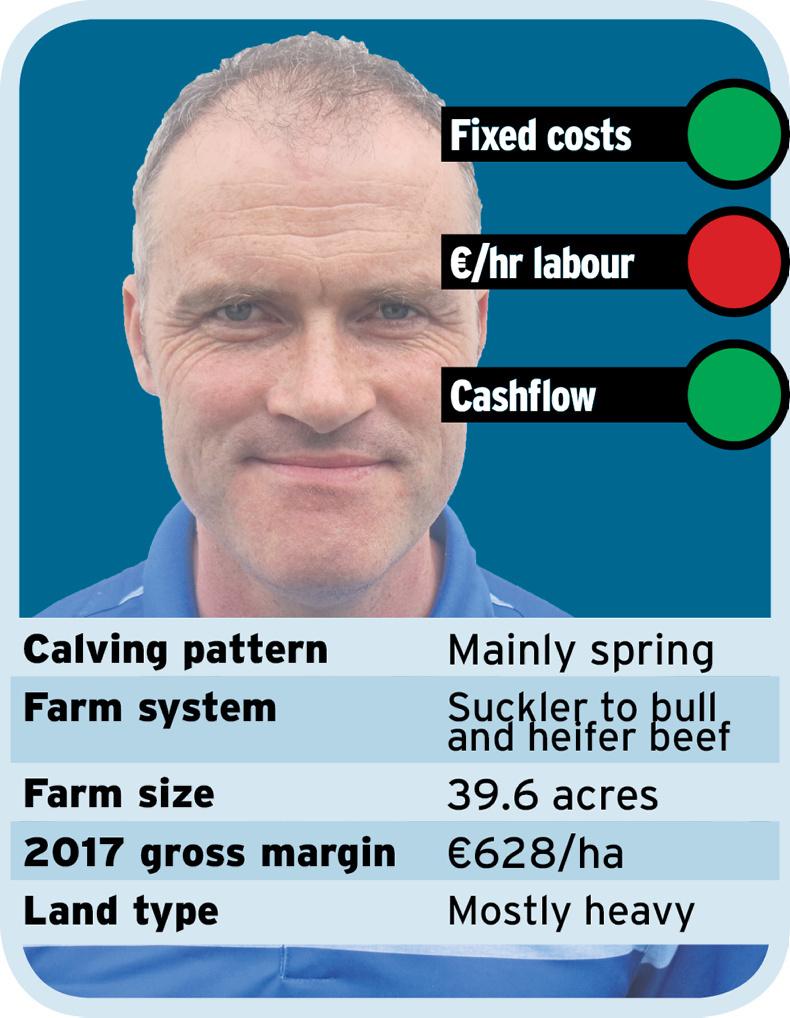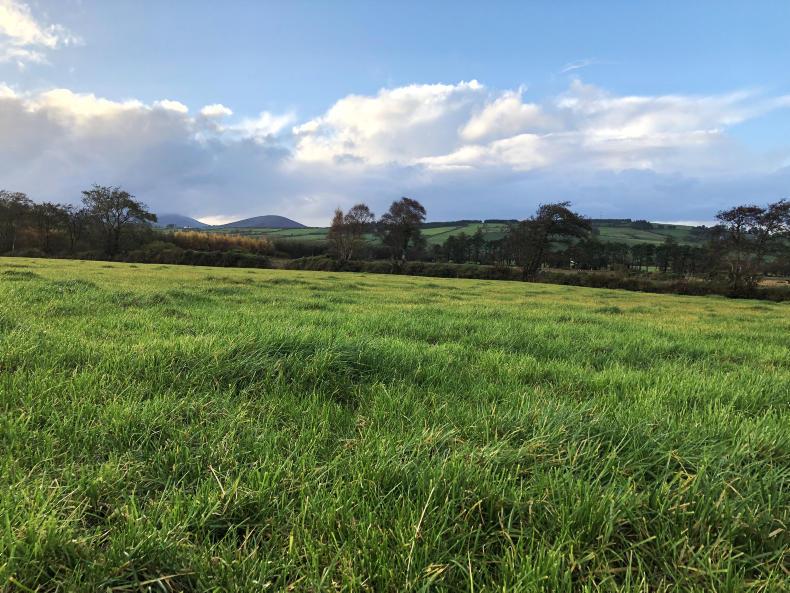The third phase of the Teagasc/Irish Farmers Journal BETTER beef programme is now just under 24 months in motion. For Cork farmer Ger McSweeney, his time in the programme has been less than half of that. With a position opening up this summer to take on an extra participant, Ger’s 40ha holding, 14ha of which are owned and 26ha which are rented, just outside Millstreet was chosen by the BETTER Farm beef challenge management team as a fitting candidate to fill the gap.
The BETTER Farm beef programme has always set ambitious but achievable targets for each participant involved. While Ger’s targets are of course achievable, they are also just as ambitious as his fellow programme members. However, with over a year less in the programme, it will be vital for Ger to hit the ground running - something he is very enthusiastic to do.

The foundations
The land, which is mainly heavy, is in two blocks, with the rented out-block being less than a five minute drive away. Ger explained the history of the farm: “suckling has always been the main operation here on the farm. We were running a split-calving spring and autumn herd, selling everything as weanlings in the autumn time of the year.” Autumn calving begins on the farm in August while spring calving commences in early December. The reasoning behind spring-calving in December is to maximise the benefit of grass by ensuring there are strong calves on the farm during the grazing season. It also leaves Ger with a strong weanling for sale. Cow type on the farm is very much continental: “the cows are predominantly Limousin crosses with Charolais and Simmental running through,” Ger explained.
In more recent times, before joining the programme, Ger said he had already begun implementing some practices that he saw as key profitability drivers: “I had been going to a few of the BETTER farm walks and, looking at those farms. I started thinking about my own system and how it could be more efficient.”
One of the areas Ger had started work on was grassland management. With the help of a newly formed beef grazing discussion group in the area by Ger’s local Teagasc B&T advisor Ellen Standish and co-advisor Aisling Molloy, he and other local famers began to see the benefits of proper grassland management. “At one of the group meetings we talked about measuring grass. I started off using a sward stick at home and at the start of this year I brought in a plate meter. Grass measurements are a vital tool for increasing numbers. I know where grass is and where it isn’t.”
Another key factor in grass management has been the implementation of a paddock system in 2017. So far, it is an extremely simple system with just temporary fencing stakes and white poly-wire being used. Paddocks were drawn up using a farm map, with sizes ranging between 0.8-1ac. The beauty about using this temporary infrastructure is the opportunity it provides to alter paddock sizes as numbers increase.

Programme stamp
Undoubtedly, the work carried out on the farm prior to joining the programme provides an excellent foundation for which to expand further. Going forward, to get the farm to Ger’s desired performance level, the BETTER Farm programme will aim to build on the good work and leave its own stamp on the system.
One of the first areas to work on is stock numbers. The farm was hovering around the 17- to 20-cow mark for a long time before numbers gradually increased to over 30 cows. Currently there are 33 suckler cows on the farm (six calved this autumn and 27 to calve in spring). Realising the need to act quickly to meet his programme targets, Ger explained his plan is to have 40 cows and calves on the ground next year: “with 33 on the farm at the moment, I’m looking to buy in-calf heifers over the next few weeks to calve with my own stock. I’ll probably be looking for seven or eight.” Ultimately, the plan is to calve 50 suckler cows by 2020.
Of course, this increase will generate a much greater workload. In an effort to combat this, the plan is to move towards 100% spring-calving to streamline operations. Calving will run in a tight December to February period.
Another key change is Ger’s move away from a weanling system to a beef finishing system. The plan is to finish all bulls under 16 months and heifers at 20 to 24 months, excluding replacements kept for 24-month old calving. Ger has already tried his hand at bull beef, starting off with six bulls, then 10 bulls and now all bulls will be run in this system. With calving still kicking-off in December, Ger is hoping he will benefit from selling his bulls in April and May, an off-peak time before the majority of young bulls are slaughtered from June to August.
Going forward in the programme, the plan will be to increase the usage of AI on the farm, improve soil fertility by soil sampling in the spring and implementing a suitable nutrient management plan, develop the farms water infrastructure and to improve accommodation to cater for higher stock numbers by replacing slats in some sheds and expanding some other areas.
Land reclamation:
This year, Ger carried out a major reclamation job on a small three acre piece of ground that was unfit for grazing. He said “one of the most important things about expanding is utilising what you have on your own farm first.”
For Ger, renting land is important but best utilisation of his own land is essential.
Picture one shows the field when work began while pictures two and three show the results.
For more on this job, see the video on www.farmersjournal.ie






 This is a subscriber-only article
This is a subscriber-only article









SHARING OPTIONS: